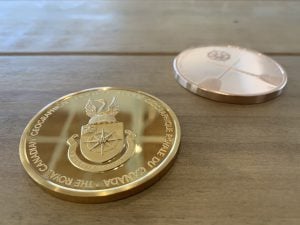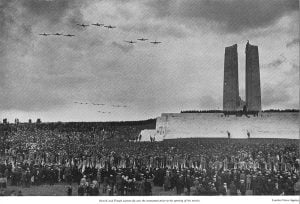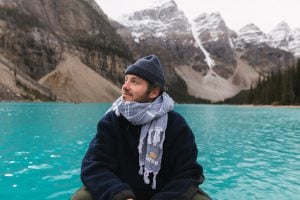
People & Culture
Royal Canadian Geographical Society Awards 2020
Award recipients honoured in the first virtual Annual General Meeting and Fellows Show.
- 2630 words
- 11 minutes
Travel
The RCGS Explorer-in-Residence shares his experience travelling through Alaska with Cunard

I love wild places.
Places that are distant from cities, far removed from the hustle and bustle of daily urban life. Places where you feel immersed in nature, not separated from it. I’ve spent years travelling to those kinds of places, often in far-flung areas of the world that require significant effort to get to, but recently I had the great opportunity to visit one of these vast, wild spaces… and to do it in a way that makes it accessible without having to mount a full-on expedition. In fact, I even packed my tuxedo.

I had briefly been to Alaska on two occasions before, once while filming an episode of the Angry Planet TV series and once again on an Arctic road trip for The Weather Network, but I never felt satisfied that I’d had a true “Alaska experience,” and for years now, I’ve been craving more. That opportunity came about when I was asked to give a series of talks for the Royal Canadian Geographical Society aboard the Cunard Lines cruise ship Queen Elizabeth.
Normally I don’t find myself partaking in cruise ship travel, but being aboard a ship in this part of the world offers a unique opportunity to witness stunning glaciers, majestic fjords, and diverse wildlife, such as whales, eagles, and adorable sea otters, in their natural habitat. That sense of adventure and exploration is still there, but it’s combined with the comfort and luxury of the ship, creating a memorable and immersive experience.
I think my favourite sight to behold on the entire voyage was Hubbard Glacier. Not only is it beautiful, with its deep blue, ancient ice cascading down from distant mountains to the water’s edge in the fjord below, but this glacier behaves unlike most of the other glaciers in North America. Ninety-five per cent of Alaska’s glaciers are receding (some of them terrifyingly quickly, and recent record-smashing heat waves across the globe don’t fill me with a lot of confidence for their long-term survival). However, Hubbard is one of the precious few still advancing. A primary reason for this behaviour is the accumulation of snowfall at the higher altitudes of the mountains surrounding the glacier’s source. The tremendous snowfall in those areas can lead to a higher mass of ice being compressed down into the glacier, causing it to expand and advance. Hubbard is so vast that parts of it begin in the Yukon Territory, on the slopes of Mount Logan, Canada’s highest peak.






There was no snow, however, at sea level where we were. In fact, we were incredibly fortunate with the weather. I lost track of how many times I heard, “We normally can’t see these mountain peaks; they’re usually shrouded in clouds.” Mother Nature was definitely smiling upon us, and I think I only encountered about six drops of rain during the entire 10-day voyage. That made for fantastic glacier viewing conditions and made going ashore to several small Alaskan towns like Ketchikan, Sitka, and Skagway a real treat.

The warm weather was definitely a reminder that the northern regions are experiencing climate change at a rate twice that of other parts of the world. The glaciers are affected, and the land is feeling the impact. In particular, the permafrost (that layer of soil that stays permanently frozen year-round) is thawing in many places. As the permafrost melts, it releases greenhouse gases (like methane from the decomposing vegetation) into the atmosphere. This, in turn, causes the atmosphere to warm even more, which melts more permafrost, which then… Well, I think you see the pattern here.
One unusual by-product of that thawing of the permafrost is that remarkable things are being found in it. Discoveries such as the remains of ancient creatures like the woolly mammoth. These extinct, hairy pachyderms are now being discovered more and more, to the point where almost every town we visited in Alaska had a shop where they sell the tusks from these ancient mammoths. I was admiring a few particularly gigantic ones in Skagway when I accidentally bumped into one, almost causing it to go toppling off its metal stand and crash to the floor. Luckily, I was able to quickly grab it and steady the tusk before it fully tipped over, which would have likely smashed into several others (at least that’s the scenario that played out in my head in slow motion), and it’s a good thing that I did manage to catch it because I took a peek at the price tag… $237,000 USD! I can only imagine the conversation with my wife, had that disaster actually occurred:
“Hey, Honey, the good news is that we are the proud owners of a woolly mammoth tusk. The bad news is that we now have a second mortgage on the house”.
It’s probably best if I just stick to enjoying the amenities of the ship and the wonders of Alaska’s epic wilderness.
Are you passionate about Canadian geography?
You can support Canadian Geographic in 3 ways:

People & Culture
Award recipients honoured in the first virtual Annual General Meeting and Fellows Show.

History
A trip back in time to the memorial’s dedication

Travel
Brewed with water and natural ingredients, Corona wants to encourage Canadians to responsibly experience the country’s natural wonders

Mapping
If you’ve ever had to help make a map, it gives you a whole new appreciation for the art form. As editor of Canadian Geographic, I’ve found myself more…